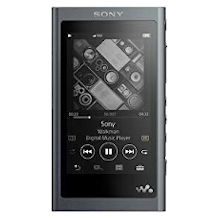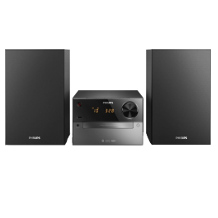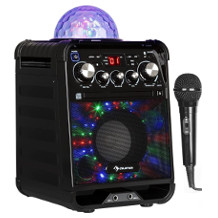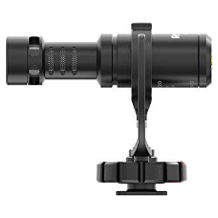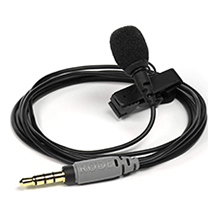Record player purchasing advice: how to choose the right product
- What you need to know
- Record players are either direct drive or belt driven. The latter are more common for home hi-fi systems, while the former are specially designed for DJing.
- Fully automatic record players are easy to use, but also easy to damage. Manual models offer you full control.
- High-quality record players have inbuilt pre-amps which means they work seamlessly with modern sound systems.
- Different records have different play speeds. It’s common for 12-inch LPs to run at 33 RPM, and for 7-inch singles to play at 45 RPM.
- You can digitize your records with an external USB interface — some models have one of these integrated.
Vinyl lives again!
In 1887, Emil Berliner registered the US patent for the gramophone with accompanying flat disks. These first black discs were made from hard rubber, a far cry from the polyvinyl chloride (PVC) plates we know today. PVC vinyl first hit the market in 1958, and due to is low production costs quickly grew to an enormous industry. However, with increasing technological development, first with cassettes, then CDs, MP3 downloads, and now music streaming, vinyl looked like it was obsolete. In particular, following the introduction of the CD in 1988 and a massive decline in sales, vinyl looked like it was only the preserve of a few collectors and enthusiasts.
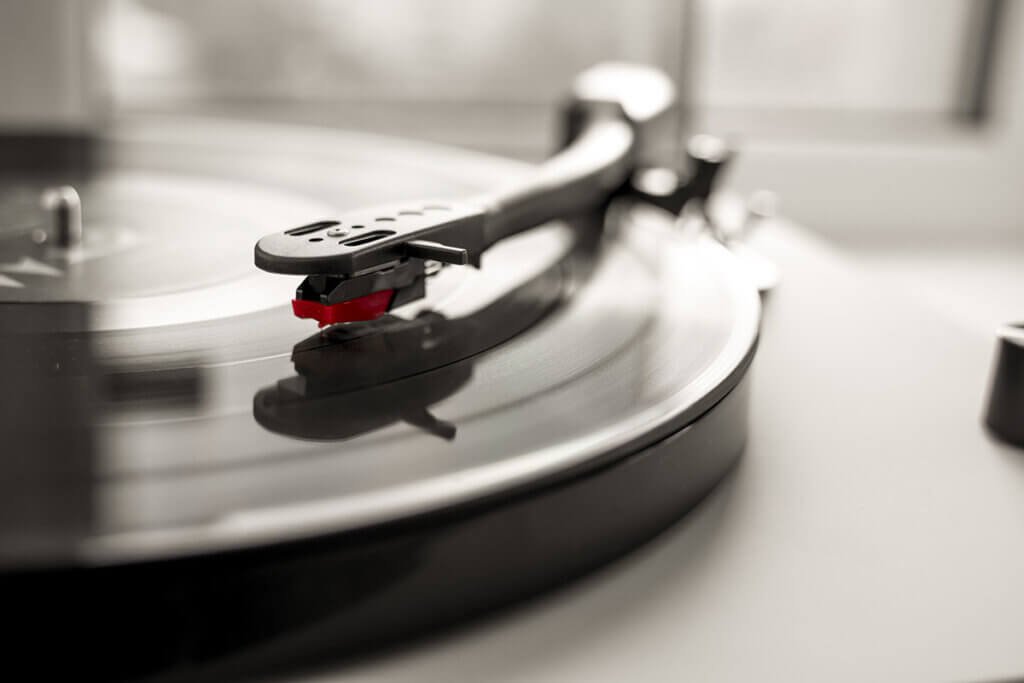
The revival
So, what happened? During the 1990s and 2000s, US vinyl sales never exceeded 2 million per year, yet by 2021, this number rose to 41.7 million. This represents an enormous increase, and vinyl popularity seems to keep on growing: 2021 sales were 50% higher than those in 2020. The reason? Nowadays, people don’t see CDs as collectible objects, nor do MP3 downloads or streaming services have the same touch or warm tone. Record companies and distributors have recognized the fresh potential of vinyl, and it’s now common for artists to put their new music out on vinyl as well as digital platforms. You can now buy records in large stores and supermarkets, not just in specialist shops or markets.
It seems then, that good old vinyl records haven’t lost their charm in our modern digital age. Characterful, warm, authentic—people use different adjectives to describe the sound quality you get from vinyl. Opinions aside, one thing is true: the inimitable sound of vinyl can’t be completely replaced by digital audio.
Reading the grooves
When you’re digging for vinyl in a record shop, you should always check to see the condition of the record. Take it out of its sleeve and look for scratches and dirty. The best record shops will let you listen to the record in store, but this isn’t that common nowadays. When buying records at markets, you should be extra careful – sometimes records look like they’ve been attacked by an angry kitten. A lot of sellers will grade the condition of their records and adjust their prices accordingly.
Advantages and disadvantages
When it comes to record players, advantages and disadvantages are subjective. For example, they are large, sensitive machines which you can’t exactly put in your pocket and listen on the go. Yet for some people, the demands placed by the machine itself lead to a better listening experience. When you play a vinyl on a record player, you are doing it deliberately. Since it’s harder to skip through a track than on your smartphone, it means you are more likely to put your favorite record on, sit back, and listen to it in its entirety.
One of the more recent developments in record player technology has been the integration of digital audio interfaces. These make it possible to play directly to active speakers, or to connect a computer via USB so you can digitize your collection. No matter what you say, all record players do have one major shortcoming: they are easily susceptible to damage.
Here are the most important advantages and disadvantages at a glance:
Advantages
- Special sound quality
- Great for deep listening
- Can be used to digitize collection
- Sometimes expandable and upgradeable
- Long lasting
- Record collections increase in value
Disadvantages
- Fragile
- Sensitive technology
- Lack of mobility
- Take up a lot of space
Design and construction
So, what’s behind the unparalleled sound you get from a record player? A lot of it is to do with the mechanics. Record players are comprised of a base with a motor to drive the turntable, either via belts or directly onto the plate, and feet to reduce vibration. The turntable is mounted on this base, and it’s where you put the record. It has an antistatic mat, usually made from cork or felt, which protects and stabilizes the record. Most record players have a plastic cover to help protect the sensitive components, the most important of which is the tonearm and cartridge.
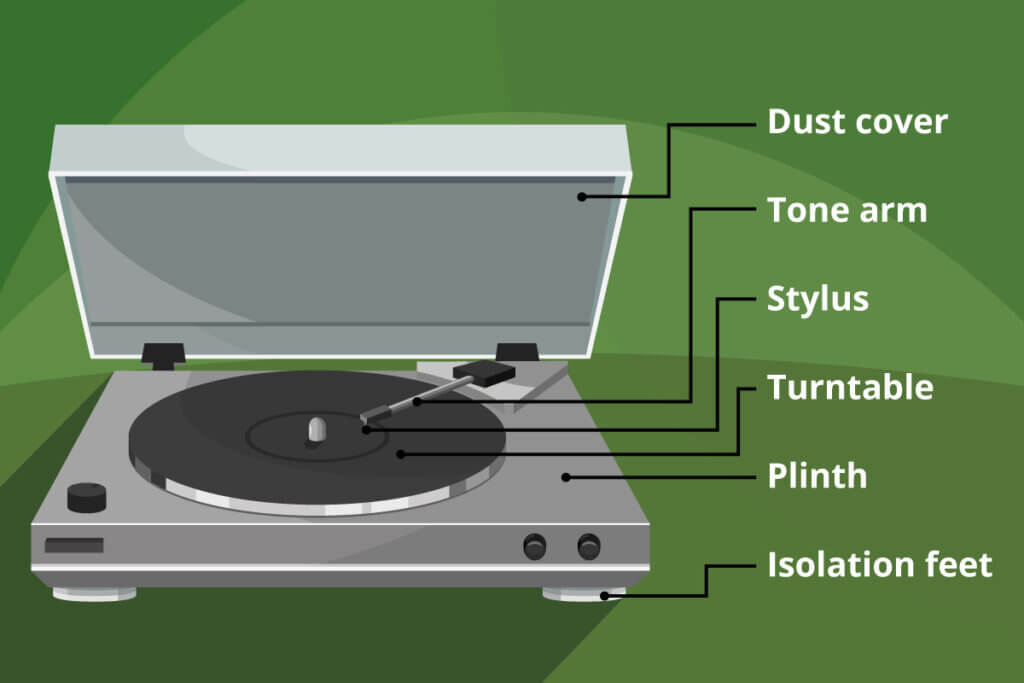
Tonearm and cartridge
The tonearm and cartridge are the two most important elements of any record player. The tonearm is in charge of where the needle goes on the record. It is either straight or s-shaped, extremely light, and made from a strong material such as aluminum or carbon fiber.
You might think of the cartridge as the heart of the record player. It is responsible for reading and translating the sound encoded within the grooves of the record. Ideally, when choosing a turntable, go for a model with replaceable cartridges so you can swap in some different types until you find the perfect sound. Cartridges are in basic terms, the needle and its surrounding housing. The needle is usually made from diamond, sapphire, or ruby.
There are three main types of cartridge:
- MM (Moving Magnet): A magnet moves in a coil and generates voltages in the millivolt range. Distortion can occur with this system, which is why it is mostly used in entry-level units. Needles are usually replaceable.
- MC (Moving Coil): The coil moves in a magnetic field and produces a more linear signal, but in the lower volt range. These systems are expensive, but also delivers better sound results. However, it is not possible to exchange the needles.
- MI (Moving Iron): The pickup generates movements in a small iron component directly near the coil. The voltage is similar to that of the MM system. These systems are comparatively inexpensive, and the needle is also exchangeable.
How to use a record player
Records have grooves with alternating widths and heights. These grooves encode the sound. Essentially, record players work by moving the needle through these grooves to decode the sound on them. The signal is then transferred via an RCA cable to an amplifier, which can then power speakers.
This is a very general summary of how record players work, and each model will have its own quirks. Nevertheless, the way to use them is always pretty much the same:
- Put the record on the turntable.
- Turn the record player on.
- As soon as you move the tonearm, the turntable should start to spin.
- Put the stylus needle on the record.
Types of record player
Record players don’t just differ in terms of cartridge technology, there are also differences when it comes to how the motor gets turned on.
Automatic, manual or semi-automatic?
These three varieties differ in terms of the starting and stopping mechanism used by the record player to engage and disengage the turntable motor. There is however, no winner when it comes to choosing a mechanism: what’s best for you will come down to your own personal preferences.

Fully automatic
Fully automatic record players are controlled at the push of a button. This means that once switched on, the tonearm will automatically move and place the needle on the record, and vice versa once turned off. Likewise, the turntable will automatically start and stop spinning. This technology isn’t just convenient, it also protects your records by preventing incorrect needle placement. The flipside is that fully automatic record players are more susceptible to damage.
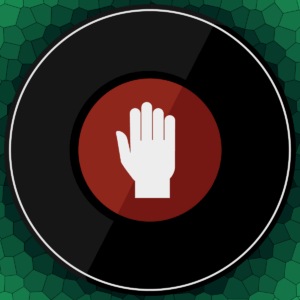
Manual
With manual record players, as you might expect, you put the tonearm on the record by hand. The record player doesn’t recognize the beginning or end of the record and will stay in a locked groove at the end of each side until you change it. Placing the tonearm requires a sure touch; carelessness can quickly lead to scratches. Manual record players are the choice for enthusiasts, especially as you need them for DJing.

Semi-automatic
If you are looking for a good middle ground, a semi-automatic turntable is the right choice. You have to put the tonearm on the record manually, but when you switch it off, it will return to its base automatically. This is extremely convenient, and it also means you might avoid damage to the player.
Manual and semi-automatic record players come with a tonearm lift. This is a small lever you can use to put the needle down on the record and take it off again without damaging the vinyl.
Drive technology
There are currently two main types of drive used in record players: belt drive and direct drive. Both systems have their advantages and disadvantages. There is a third, friction drive, but you don’t find it much anymore.
Belt drive
Most current turntables are belt driven. The rubber belt that gives the turntable its name transfers the rotation of the motor to the platter. The motor and platter are therefore separate from each other. Audiophiles favor this type of drive particularly because the belt dampens vibrations and noise. As such, the platter rotation is very smooth. The main disadvantage is that belt drive turntable are more susceptible to loss of synchronization and speed fluctuations. In addition, the belts wear out over time, which is why they need to be replaced from time to time.
Direct drive
Direct drive is the DJ’s choice. They have a design in which the axis of the turntable is also the axis of the drive motor. In other words, the motor’s electromagnets act directly on the turntable. The advantage is that the turntable has an extremely short start-up time, and once it is going it is extremely powerful. Moreover, direct drive turntables let you change the pitch of the motor, which means you can speed up and slow down records precisely: exactly what you need for mixing records seamlessly. While they are more durable than belt drive turntables, they aren’t designed for audiophile Hi-Fi systems due to the noise that can come from the motor.
Outdated: friction drive
You might occasionally find a friction drive record player, but not often. Due to their poor sound quality, they haven’t really been produced since the 1980s. Although the design produces a good amount of torque which allows the turntable to spin up quickly, it produces a lot of motor vibrations.
What matters when buying
Record players are now available in various designs and sizes and with different features. They shouldn’t just look good, they should sound great! After all, the most important thing is convincing sound. For this, the most important factors include the connections and the playback speed. Ultimately, however, the device should above all suit your own needs.
The connections: from phono to USB
The connection options for record players are usually pretty standard, but you will have to think about what you are connecting yours up to. Most models have a built-in preamplifier, which means they can work with modern speakers. This also makes things much less complicated, as you won’t need an amplifier. If the model you go for doesn’t have an integrated preamp, you will need to make sure your amplifier has phono inputs.
Some turntables are equipped with a USB port. This allows you to connect them to a PC so you can digitize your old vinyl. With the right software, you can convert albums into MP3 files. Even Bluetooth and WLAN have found their way into the vinyl world. This allows you to stream music to headphones or speakers. A 3.5 millimeter jack for headphones is also a useful feature.
Playback speed
12-inch records, also known as LPs (long-playing records), need to be played at a different speed than 7-inch records (singles). Most record players can be set to different playback speeds. The following standards are common:
- Roughly 33.3 RPM for LPs.
- 45 RPM per minute for singles – nowadays you can also find 12 inch EPs that play at 45.
If you’re a DJ, you should look for a record player with pitch control. This allows you to adjust the platter speed extremely precisely – essential for mixing tracks.
Anti-skating
Antiskating prevents the needle from slipping. It ensures that the needle always remains exactly in the center of the groove. This means that your records don’t get as much wear, and the sound produced by the record player will also be better.
Entry-level or high-end? Record players for everyone
A bad record player isn’t just bad for your ears, it can damage your records. However, not everyone wants to DJ with their turntable, so not everyone needs a top-end model. There is a suitable device for almost every budget, from entry-level to high-end models.
Beginners are well advised to go for an inexpensive model between $150 and $200. In this price range, you can get a device with solid sound and sometimes even a USB connection. In fact, models that cost up to $600 are still considered entry level by some. This said, these slightly higher-priced record players usually have better sound quality. High-tech models can cost over $1000. These record players almost always have a very heavy platter. These audiophile turntables are not only eye-catching on the outside but also almost perfect on the inside.
DJ record players have different priorities their audiophile counterparts. Here, the focus is on the mechanics, more precisely the direct drive design, powerful motor and pitch control system.
Tips for set-up and maintenance
Choosing where your record player goes is extremely important. It needs to be on a flat, perfectly horizontal surface. Stands are just as helpful as a stable base. Always protect your records themselves from heat, otherwise they can warp and deform.
To protect both the player and your beloved records from wear, you need to handle them with care. The needle will permanently collect dust from the grooves, so it is important to clean it regularly. Ideally, use a needle brush that is not too soft. If dust has settled in the grooves, it will cause the familiar crackling and hissing noises we associate with records. After a while, dust won’t just affect sound quality, it will start to damage the needle and records. As such, before playing a record, use a dusting cloth or a carbon fiber brush to thoroughly but gently remove dust from both the turntable and the records. After listening, carefully put your records back into their sleeves.
If possible, you should replace the cartridge and needle regularly. The frequency with which you should do this depends on the quality of your record player and how often you use it. A clear sign of a needle ready for replacement is a distorted signal.
Image 1: © Volodymyr / stock.adobe.com | Image 2-5: © FinalCheck

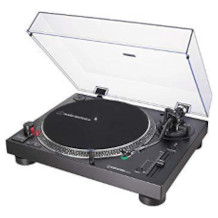
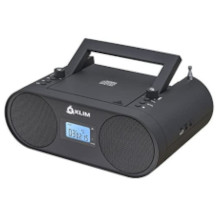
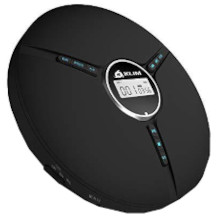
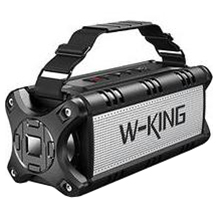

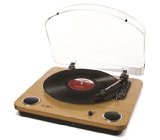
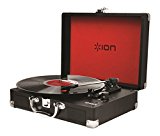
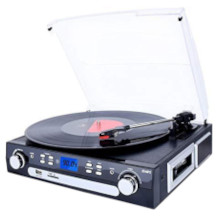
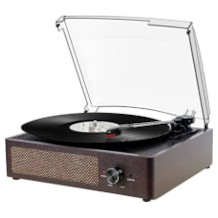
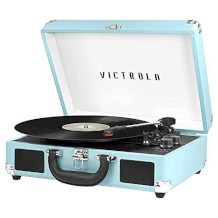
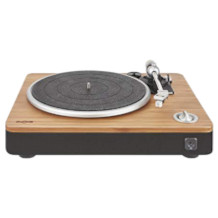

 737 reviews
737 reviews
